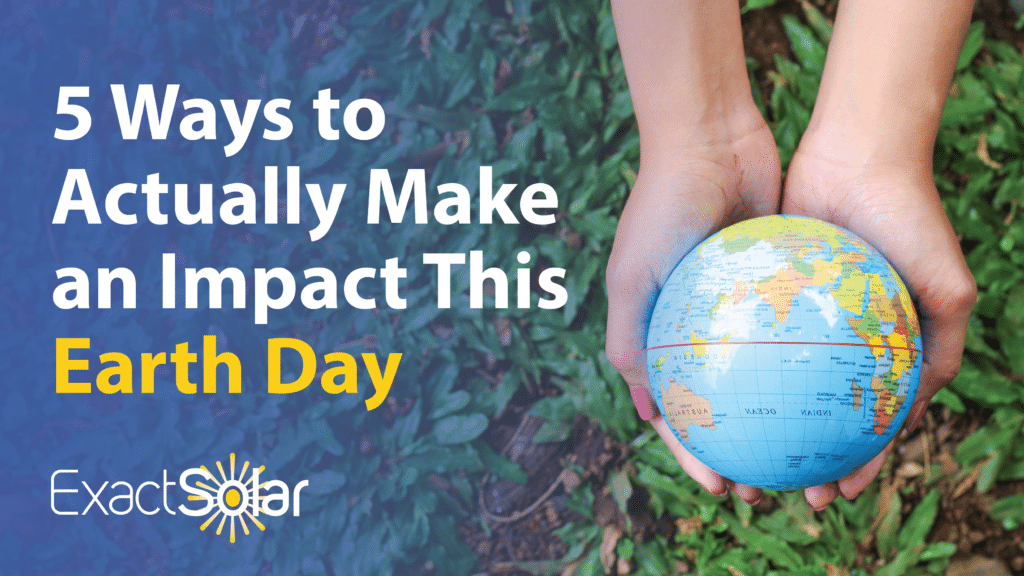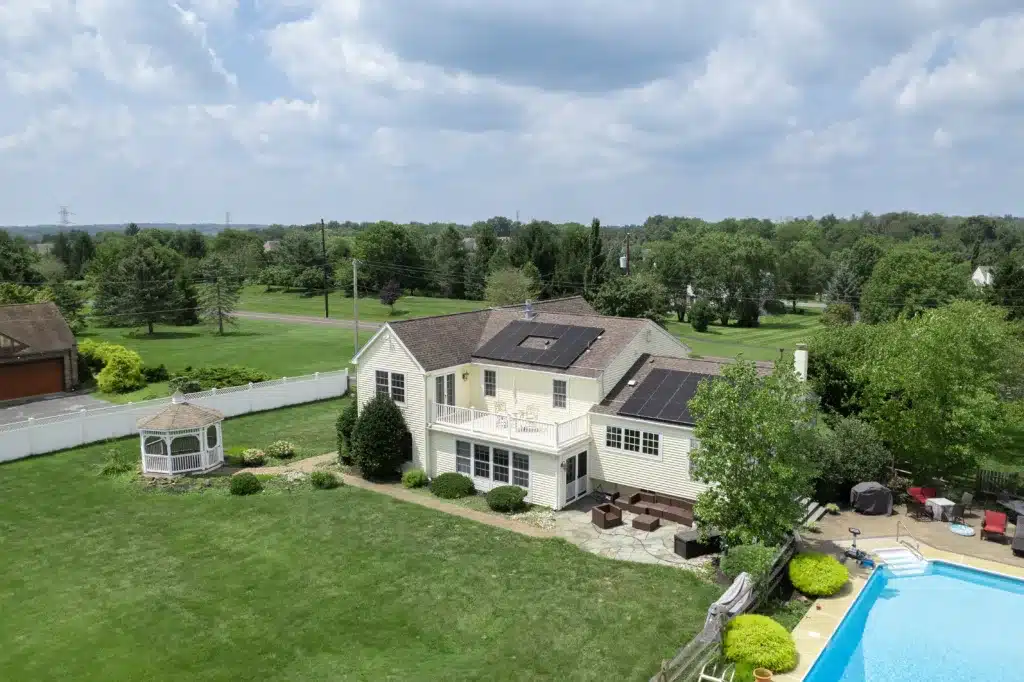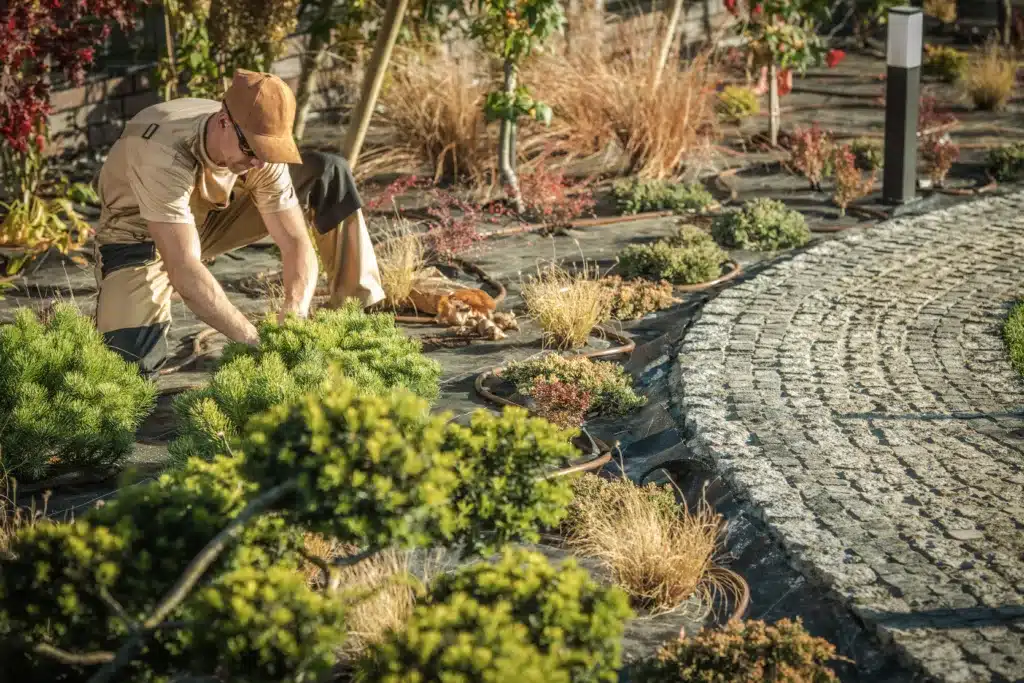
Every Earth Day, we hear the same advice: bike to work, recycle, thrift all your clothes, switch to rough-spun hemp clothing for the rest of your life… whatever it may be.
The problem is that large energy companies thought up many of these pieces of advice, then ran PR campaigns to deflect attention away from the issues they’ve created and foist the blame and responsibility onto average citizens.
One of the most egregious examples of this is the idea of the personal ‘Carbon Footprint.’ Though they didn’t invent the concept, BP hired an advertising firm to popularize it in the early 2000s.
We’d never suggest that you shouldn’t do any of these things. Biking to work can offer you many more benefits than just lowering your ecological footprint. We are saying that we’re tired of hearing these repeated every year as the only option the average person has to make an impact!
Since Exact Solar has done some advocacy and policy work over the years, we asked around in our network to find out what the average person can do to actually make an impact on Earth Day.
Below are the top five answers we received. The best thing about them? Not only will they help you make an impact on the planet, but they’ll all save you money in the long run!
Get Involved in the Fight to Update the AEPS
If you’re not already familiar, here’s a high-level summary of the Alternative Energy Portfolio Standard (AEPS) battle:
Pennsylvania is operating on a very outdated energy standard. In 2004, Pennsylvania mandated that a certain percentage of its power must come from ‘alternative’ (note: not renewable) sources by 2021. The Commonwealth met those percentage goals in 2021 and since then, they have not been updated.
This means that PA is not investing in clean energy jobs and infrastructure. If PA wants to keep its status as an energy leader as the economic tides shift to renewable energy, we have some catching up to do!
If you want to support the fight for better renewable energy standards in Pennsylvania, find your state representative with Legis and call to schedule a face-to-face meeting via Zoom (emails get lost and buried). Tell them:
“We want an update to the AEPS, whether through passing Governor Shapiro’s PRESS or PACER initiatives, HB 1467, or SB 230. We want a fair price for Pennsylvania SRECs, and the best way to get there is by requiring more renewable energy in Pennsylvania’s portfolio.”
Want someone to sit in with you and support you with key points? Monica Carey from Solar United Neighbors has generously offered to sit in senator meetings with any Pennsylvanian who reaches out to a senator and sets up a time to talk.
You can email her at [email protected]
Want to learn more?
We’ve written several articles on the topic in the last six months, so if you’d like to take a deeper dive, here are a few resources that you can use:
- Governor Shapiro’s PRESS and PACER Plans: A Cleaner Way Forward For PA?
- How PA Homeowners Can Help Raise SREC Prices
- Why Pennsylvania is Falling Behind in the Renewable Race
If you want to get involved in a different way or donate somewhere instead of contacting a senator, here are some of our favorite Pennsylvania clean energy activist groups fighting to update the standard:
- Green Philly
Green Philly is a local news outlet that covers all things sustainability in Philadelphia. From their site:
“Climate change is the greatest challenge of our lifetime. In order to overcome it, we need to make solutions easy, local, and relevant to everyday people.”
They’re a perfect local organization to support with a monthly or yearly subscription. - Solar United Neighbors of Pennsylvania
SUN (clever, right?) is a nationwide nonprofit that advocates for community solar, facilitates the creation of solar co-ops, and advocates for national and state-level policies that grow the solar market. They also help low-income people get solar systems and help average homeowners navigate the solar process. - PennEnvironment
PennEnvironment is a statewide, citizen-based environmental advocacy organization. They believe that everyone should have clean air to breathe, clean water to drink, beautiful parks to enjoy, and a safe, livable climate powered by 100% renewable energy to call home. They work to make that vision a reality by mobilizing citizen support across Pennsylvania to advocate for good environmental policies and win real results for our environment and climate.
They routinely publish guides that help people understand local policies and navigate clean energy policies. They are also hosting a citizen lobby day on June 6th, which will be a great chance to meet with your state legislator in support of good clean energy policies! All are welcome, so RSVP today! - Sustainable Business Network of Greater Philadephia
If you’re a business owner, this one’s for you. From SBN’s website:
“Be part of a community where you bring your talents, challenges, wisdom, and voice to build a just, green, and thriving local economy that helps everyone.”
SBN is a network of businesses in the greater Philadelphia area committed to sustainability. Even if you don’t join, their events are an excellent opportunity to network with like-minded people!
Look Into Going Solar or Refer a Friend

Yes, we’re a solar company, and we’re telling you to get solar. Our motivation for recommending this one is clear. But as a climate-conscious homeowner, a solar system can substantially reduce your emissions, save you money, offer you tax breaks, and raise the value of your home.
Whether it’s with another solar company or Exact Solar, get a quote this Earth Day as part of your commitment to making a change. Figure out what it would cost. You might be pleasantly surprised! Contacting a local solar company and getting a quote is a free step that you can take in the right direction.
Solar may not be suitable for your home if your roof is too shaded or doesn’t get enough sun exposure. Your wiring might need to be updated to install a PV system on your roof. You never know if you’ll be able to get solar, but you should at least give it a chance!
If you already have solar, consider referring a friend! Many solar companies have referral programs, so you might be able to pick up a small Earth Day incentive for passing along a friend’s information!
At Exact Solar, we actually have our very own referral program! If you refer someone to Exact Solar and they install a solar system on their home, we’ll pay you $500. There are no ifs, ands, or buts.
Invest in an Electric Vehicle

Buying an EV can be a great long-term move for the planet and bring money back into your pocket sooner than you think. Right now, a $7500 federal tax credit* is offered to anyone who buys a new EV, and various state-level incentives are offered, which we will go into further below!
Purchasing an EV will significantly impact the environment over time. Electric vehicles, like solar panels, have an energy payback period. An energy payback period is the amount of use a renewable resource requires before it has generated more energy than was used to produce it.
Solar panels take significant energy to manufacture, but after 1 to 4 years, they’ve created more clean energy from the sun than the amount of energy used to make them in the first place. Then, they go on to produce power for another 20 to 25 years.
A large amount of energy and water is used to mine lithium and manufacture EV batteries. According to a Reuters analysis, a Tesla must be driven 13,500 miles before it becomes cleaner than a gasoline car.
EVs are far from perfect, but they’re better than cars with internal combustion engines for a few reasons:
- Since they don’t create emissions, they’re much cleaner than cars with internal combustion engines, which may be on the road emitting carbon monoxide for 20 to 30 years.
- Lithium is recyclable. Unfortunately, it’s far cheaper to mine lithium than recycle it, so we keep digging up new lithium and not using it in the batteries we already have. However, scientists are working on solutions for this.
If you have an EV and want to speed up your payback period, you can ensure that the energy you use comes from renewable sources. One of the best ways to do this is to get a solar system! (bet you didn’t see that one coming.)
Bidirectional charging is one of the most exciting developments in EV technology, and it will soon be more widely available.
Essentially, bidirectional charging means that the energy going from your home to your car can flow the other way if there’s a power outage. If the lights go out in a storm, your vehicle can be your house’s battery!
So, imagine this: you have a solar system and are saving money with clean energy from the sun. Your solar system powers your car, and your car powers your home if there’s an emergency.
Sounds pretty cool to us…
Federal and State-level EV Rebates
Because of the Inflation Reduction Act, if you purchase a new EV or plug-in hybrid vehicle in 2024, you’ll receive a $7500 federal tax credit next year (if you’re under a certain income threshold).
State-level incentives are also available. Certain income-qualified Pennsylvanians are eligible for a $2000 rebate toward an EV.
If you live in New Jersey and want to buy an EV, you have a host of options to help with the cost, such as a $4000 rebate, an incentive to install an EV charger in your home, and a sales tax exemption on the purchase price.
*Federal EV tax credits are dependent on income and other qualifications. Consult with your tax advisor before purchasing an EV.
Make Your Home More Energy Efficient
The Department of Energy has compiled hundreds of web pages of information on modernizing your home to make it more energy efficient. They’ve compiled a comprehensive list of tax credits you can qualify for if you invest in energy efficiency and a free PDF guide to energy efficiency that you can download here.
Here are some of their top tips:
- Service Your Air Conditioner and Modernize Your HVAC System
- Air Conditioner: Regular maintenance, like cleaning or replacing air filters, can reduce your cooling system’s energy consumption by up to 15%. This includes checking the evaporator coil annually to ensure the system performs correctly. For more detailed guidance on maintaining your air conditioner and hiring a professional to ensure the job’s done right, visit the Department of Energy’s page on Air Conditioner Maintenance.
- HVAC System: Upgrading to a modern, energy-efficient HVAC system can significantly reduce your energy bills and increase the comfort of your home. Modern systems are more energy-efficient and regulate temperature with less energy wasted! You can find more detailed information about Heating and Cooling on this Department of Energy page.
- Install Energy-Efficient Windows and Accessories
Heat gain and loss through windows are responsible for 25-30% of modern household energy use! Almost a third of the energy you pay for escapes if you don’t have energy-efficient windows. Installing modern windows can drastically cut costs. Using blinds, shades, or films on top of modern windows can lower energy costs.
- Seal and Insulate
Sealing uncontrolled air leaks and adding insulation can save on heating and cooling costs. Caulking and weatherstripping often offer a total return on investment in one year or less!
- Upgrade to Energy-Efficient Lighting
Since lighting costs comprise roughly 15% of a home’s energy cost, replacing your old incandescent lights with LED bulbs can significantly lower your bill. LEDs use at least 75% less energy, last 25 times longer than traditional incandescent bulbs, and save the average homeowner $225 a year.
- Use a Programmable Thermostat
Installing a programmable thermostat can help you set your heating and cooling systems to operate only when needed. Programming your thermostat to turn off at certain times of day can reduce unnecessary energy use and costs by about 10% each year.
Start a Permaculture Garden or Xeriscape Your Yard

Pop quiz! What’s the most watered crop in America? Is it:
A. Corn
B. Soybeans
C. Avocados
D. This is clearly a trick question.
If you selected D, you’d be right! The most watered crop in America is lawn grass (‘Crop’ is defined as: ‘the cultivated produce of the ground, while growing or when gathered’). If you add up the size of all the lawns in the U.S., they take up vastly more space than all the farmland we’re using.
50 to 75 percent of a home’s water use goes to watering lawns during the summer. A massive percentage of our total fresh water every year goes to cultivating something that we cover with dangerous pesticides and don’t eat.
So, what if you could:
- Drastically reduce your water use and still have an amazing yard
OR - Use that water you’re already using to actually grow something useful and delicious?
If you’re not a heavy lawn user and live somewhere without an intrusive HOA, consider Xeriscaping or Permaculture on part of your property.
Xeriscaping
Xeriscaping can be summed up simply as landscaping with native plants. In Pennsylvania and New Jersey, native plants include:
- Clubmosses
- Ferns
- Grasses
- Rushes
- Sedges
- Shrubs
- Vines
- Wildflowers
- Woody trees
Since our region gets a lot of rainfall, it’s easy to plant native plants in your yard and let them coast along without wasting water! Xeriscaping can save you money and make your yard look much more interesting than just another house with a boring lawn.
Don’t want to take our word for it or afraid it’ll turn out ugly? You can find a perfect example of a Xeriscaped garden space in front of Penn State’s Safety Building.
Permaculture
Permaculture International defines permaculture as: “the art and science of designing [human] systems in harmony with Nature that result in healthy, thriving landscapes and people.”
Permaculture takes gardening a step further and focuses on using native plants as much as possible. Rather than creating a garden that needs to be constantly weeded, permaculture projects focus on creating an edible landscape that looks great and isn’t hard to maintain.
If you’d like to learn more and potentially set up your own project, Gaia’s Garden is the best-selling and most widely respected book on the subject. Tenth Acre Farm has a lot of articles on Permaculture as well.
If you live somewhere without garden space, no worries! There are several community gardens in the greater Philadelphia area where you can sign up to grow your own food.
Now, Get Out There and Take Action!
You now have five tools to make a big difference in how you show up in the world. Whether you choose to implement this entire list or just swap a few bulbs for energy-efficient ones, remember:
The net impact of any one positive choice is greater than nothing.
Happy Earth Day 2024!
